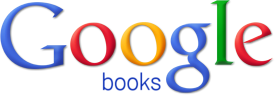If you’ve got any books published on Amazon Kindle, whether uploaded by yourself or through a publishing company, you may be aware of Amazon’s Author Central service.
Author Central allows authors to maintain a page for themselves with an overview of all of their books currently for sale. Your own Author Central page is a great way to provide your readers with more information; for example you can add a picture of yourself, a bio, and I’ve even seen authors link up their Twitter accounts to their Author Central page.
But of course the main point of the Author Central page is to allow your readers to discover more of your books, or to be discovered by people who have never heard of you before.
This ultimate feature of Author Central is set to become even more important now though! Amazon is introducing a new feature on their brand new Kindle Fire and Kindle Touch devices called “About the Author”. Every one of your kindle books when viewed on these new devices will have an “About the author section that shows your profile information from Author Central, including your photo, bio, and other titles for sale as clickable links so the reader can purchase them immediately and conveniently.
As we all know, marketing our books can be hard work. So when offered something free like this, it would be silly not to make use of it! Go on, check that you’re on Author Central so you can make use of the new “About the Author” feature as well!



